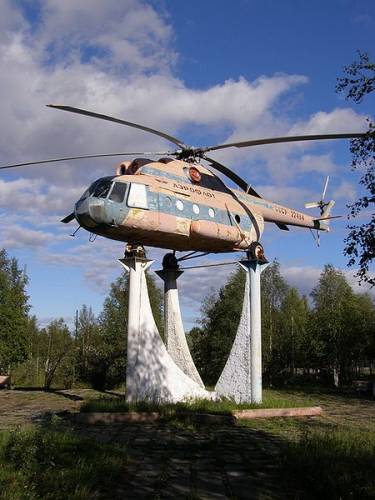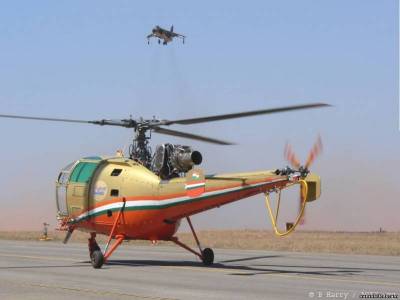Born as a transport and a coherent means of rotary-wing aircraft immediately began to push the boundaries of its application, especially in the military field. Already in 1931 the U.S. armed forces bought a few gyros Pitkera and Kellet, who were to meet the challenges of intelligence, corrections, communications, supplies and participate in search and rescue operations, as in the army and navy.
In 1933, helicopters performed well during military maneuvers in the UK, after which the British Army ordered a Spanish company. First five gyros C-40. In the spring of 1940 these machines were used for communications during the fighting in France, but were lost during the evacuation of British Expeditionary Force from Dunkirk. In January 1944, Britain became party to the United States experienced helicopter Sikorsky YR-4B. When transporting these helicopters on ships often recruited to search for submarines. In England the YR-4B came first in the research and academic centers, and then in 529 th Squadron.
Quite a large number of military autogyro LeO C-30 was the beginning of World War II France: 52 - in the army, and 8 - in the Navy. The French air force helicopters took part in military operations until the fall of France in May 1940
In Germany, the first and only helicopter part (40th Transport Squadron) was formed in early 1945 on its armament consisted of helicopter Focke-Ahgelis Fa-223 and FI-Fletner 282. The squadron was engaged in the adjustment of artillery fire, and also served as transportation and communication operations on the Eastern Front. In addition, the submarine was built about two hundred and towed gliders, gyroplanes, "flying periscope," the Focke-Ahgelis Fa-330.
In the USSR the first autogyro design began in November 1928 under the leadership of Nikolai Ilyich Kamov supported Osoaviahima. September 25, 1929 gyroplane KACKP-I made its first flight. In January 1931, this specimen was equipped with an engine twice as much power and was designated KASKR-I. In October, Kamov design teams led by TsAGI, which took up the development of the first combat A-7 gyro. Prototype A-7 flew on September 20, 1934 In 1939, the Kamov was appointed head of the pilot plant team who built a series of head gyros A-7-over, and a year later - the director of the first Soviet plant rotary-wing aircraft. His deputy was the ML Miles away.
In June 1941, at the initiative of Kamov was created 1st single ADJUSTMENT squadron of five A-7-In. In August-September 1941, it is composed of the 24th Army took part in the Battle of Smolensk. During the retreat of the Red Army to Moscow, three vehicles were lost, and the rest of the battles are no longer used. It should be noted that Kamov A-7-over was the only rotary-wing vehicle of the Second World War, which had powerful weapons, three machine guns, bombs weighing up to 400 kg or six rockets.
Harsh conditions of war demanded the cessation of work in the promising areas in the industry. In 1943 the factory was disbanded and its staff are directed to various businesses.
The only countries using rotary-wing aircraft during World War II, were the United States. From April 1944 Sikorsky helicopters VS-316 (Army designation R-4B) participated in combat operations in the north of Burma and eastern India. They are mainly engaged in supplying defense centers in the jungle, the evacuation of the wounded, for the operation of the commandos. Given the experience of operating R-4B Sikorsky company has developed a helicopter S-47, S-48 and S-49. Until the end of the war the U.S. was built about 400 helicopters, which were formed from specialized helicopter units with units of maintenance and repair.
After the Second World War, helicopters are widely used in local wars and conflicts. For example, in Malaya in 1948 to transport infantry British Army activated 26 S-51 helicopters, which carried about 20 thousand sorties.
However, the present recognition of the helicopters were only in the Korean War (1950-1953 gg.). If to the beginning of the U.S. Army Aviation aircraft was in 1186 and only 56 helicopters, shortly after graduation - 2518 aircraft and helicopters already in 1140. In Korea, the rotary-wing machines perform their traditional tasks: transport, intelligence and corrections, search and rescue. For example, just one day Incheon landing operation 12 helicopters carried 262 departure by bringing two thousand soldiers and 50 tons of cargo.



